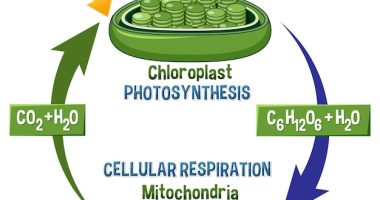A groundbreaking study published recently highlights the critical role of PPARδ activation in bone marrow recovery, specifically focusing on bone marrow endothelial progenitor cells and their hematopoiesis-supporting ability following myelosuppressive injury. Conducted by a team of researchers including Mi Liang, Zhong-Shi Lyu, and Yuan-Yuan Zhang, this research offers new insights into the treatment possibilities for patients suffering from acute leukemia or myelodysplastic neoplasms who have undergone allo-transplants.
The study begins by addressing a pivotal problem faced by these patients — poor graft function (PGF), which is often the result of dysfunctional bone marrow endothelial progenitor cells (EPCs). These cells are crucial for the regeneration and proper functioning of hematopoiesis, the process by which new blood cells are formed. However, in PGF patients, these cells tend to exhibit increased levels of reactive oxygen species (ROS), leading to inadequate hematopoiesis and complications post-transplant.
The researchers delve into the biochemistry behind these processes, discovering a marked reduction in the activity of peroxisome proliferator-activated receptor delta (PPARδ) among BM EPCs in patients with PGF compared to those with good graft function (GGF). This finding is significant, as PPARδ is known to play a central role in modulating intracellular ROS levels and supporting efficient hematopoiesis.
Through a series of well-designed in vitro and in vivo experiments, the team explores the potential of PPARδ knockdown and overexpression. Their results reveal that reduced PPARδ activity contributes to the diminished function and number of BM EPCs, adversely impacting their capacity to support blood formation. Conversely, overexpression of PPARδ or treatment with GW501516, a PPARδ agonist, substantially ameliorates these effects, enhancing both the structure and function of the damaged BM EPCs.
By further elucidating the molecular mechanisms at play, the study identifies a linkage between PPARδ insufficiency, increased NOX expression (major ROS-producing enzymes), and the activation of the ROS/p53 pathway, which together precipitate BM EPC damage. Therefore, the activation of PPARδ emerges not only as a pivotal factor in normalizing the function of bone marrow endothelial progenitor cells post-myelosuppression but also as a promising therapeutic target. This research opens the door to potential new treatments that could benefit a broad spectrum of patients afflicted with various conditions of bone marrow dysfunction due to cancer treatments.
### Background
Bone marrow recovery post-myelosuppressive injury is a critical phase in the treatment of hematologic malignancies, particularly in conditions like acute leukemia and myelodysplastic neoplasms where patients undergo allogeneic hematopoietic stem cell transplantation (allo-HSCT). A major complication associated with allo-HSCT is poor graft function (PGF), which significantly impacts patient outcomes due to the failure in the establishment or maintenance of donor hematopoiesis. PGF often poses a formidable clinical challenge, necessitating an improved understanding of the underlying biological processes that can be targeted for therapeutic intervention. Recent advancements have spotlighted the role of PPARδ activation in bone marrow recovery, revealing new therapeutic possibilities.
Peroxisome proliferator-activated receptor delta (PPARδ) is one of the three isoforms of the nuclear receptor PPARs which regulate gene expression in response to ligand binding. The functions of PPARδ are diverse, encompassing the modulation of metabolism, inflammation, cell proliferation, and differentiation. Notwithstanding these broad roles, the specific activation of PPARδ in the context of bone marrow endothelial progenitor cells (EPCs) and its impact on hematopoiesis has only recently begun to be elucidated.
Bone marrow EPCs play an essential role in the regeneration and functionality of the hematopoietic microenvironment. These cells contribute to the reformation of the vascular niche that supports hematopoiesis—the process by which new blood cells are formed. In patients experiencing PGF, the functionality of these EPCs is compromised. Studies have shown an increase in reactive oxygen species (ROS) in these patients, suggesting a link between ROS imbalance and hematopoietic dysfunction. The research conducted by Mi Liang, Zhong-Shi Lyu, and Yuan-Yuan Zhang, among others, investigates this phenomenon, focusing on the role of PPARδ in mediating these effects.
Evidently, the activity of PPARδ within bone marrow EPCs in PGF patients is substantially reduced as compared to those with good graft function (GGF). This reduction appears to be a key factor in the heightened ROS levels seen in these cells, as PPARδ is known to play a significant role in the modulation of oxidative stress and cellular redox balance. Prior research has demonstrated the ability of PPARδ to regulate a series of genes responsible for ROS detoxification and reduction, hinting at its potential protective role against oxidative stress-induced cellular damage.
The importance of PPARδ in hematopoiesis is further highlighted by experimental models where manipulation of its expression or activity directly affects the survival and function of bone marrow EPCs. Studies deploying PPARδ knockdown models have shown worsened outcomes in bone marrow recovery, characterized by decreased EPC numbers and function, leading to inadequate hematopoietic support. Conversely, overexpression of PPARδ or pharmacological activation using agonists like GW501516 significantly improves these parameters, enhancing EPC structure and function, thereby ameliorating hematopoietic recovery post-myelosuppression.
Furthermore, the molecular pathways underpinning these effects have begun to be mapped out in detail. Specifically, a connection has been established between reduced PPARδ activity, increased expression of NADPH oxidase enzymes (NOX), which are major producers of ROS, and the consequent activation of the ROS/p53 pathway, leading to EPC damage. Through modulation of these pathways, PPARδ activation emerges not only as a key mechanism in normalizing the function of EPCs following myelosuppression but also provides a promising therapeutic target to improve bone marrow recovery in patients post-transplant.
Indeed, the implications of these findings extend beyond the immediate context of allo-HSCT and could potentially influence a wide array of therapeutic strategies aimed at managing bone marrow dysfunction resulting from various cancer treatments. Thus, the activation of PPARδ holds great promise in advancing the frontier of regenerative medicine and supportive care in oncology.
### Methodology
#### Study Design
The investigation into the effects of PPARδ activation on bone marrow recovery involved a comprehensive and carefully structured experimental approach, integrating both in vitro and in vivo methodologies to elucidate the mechanisms and therapeutic potential of PPARδ in bone marrow endothelial progenitor cell (EPC) functionality post-myelosuppression.
##### In Vitro Experiments
The in vitro portion of the study centered around cultured bone marrow-derived endothelial progenitor cells isolated from patients with poor graft function (PGF) and those with good graft function (GGF) post-allogeneic hematopoietic stem cell transplantation. These cells underwent genetic manipulation to either knock down or overexpress PPARδ, creating distinct groups for comparative analysis:
1. **Control Group:** EPCs with unaltered PPARδ expression.
2. **Knockdown Group:** EPCs with reduced PPARδ expression using siRNA techniques.
3. **Overexpression Group:** EPCs with enhanced PPARδ expression via vector-based gene delivery.
Following manipulation, these cells were assessed for several parameters:
– **Cell Viability and Number:** Using cell counting and viability assays to determine the proliferation rate.
– **ROS Levels:** Measured through DCFDA cellular ROS detection assay to evaluate oxidative stress.
– **Gene Expression:** Real-time PCR and Western blot analyses to detect changes in the expression of ROS-related genes and the ROS/p53 pathway markers.
##### In Vivo Experiments
Animal models (mice) were used to further substantiate findings from in vitro experiments. Mice undergoing myelosuppressive treatment were divided into three groups, paralleling the in vitro study design:
– **Control Group:** Mice treated with a placebo.
– **PPARδ Agonist Group:** Mice treated with the PPARδ agonist GW501516 to stimulate PPARδ activation.
– **Antagonist Group:** Mice treated with a PPARδ antagonist to inhibit its activity.
The evaluation in these animal models focused on:
– **Bone Marrow Recovery:** Assessed through hematopoietic stem cell count and functionality post-treatment.
– **Histological Examination:** Bone marrow biopsies analyzed for structural integrity and EPC functionality.
– **Survival Rate:** Monitored throughout the study period to correlate outcomes with treatment.
##### Analytical Methods
Statistical analysis played a crucial role in this study, employing advanced statistical tools to ensure the accuracy of the results. Techniques such as the ANOVA test for multiple group comparisons and t-tests for two-group comparisons were used. The level of significance was set at p<0.05.
#### Ethical Considerations
The study adhered to strict ethical guidelines, with all patient-derived materials handled according to the approved protocols by institutional review boards. In vivo experiments were conducted following animal welfare regulations and approved by the appropriate ethical committees.
#### Outcome Measures
The primary outcomes of this study were the improvement in the structure and function of bone marrow EPCs, reduction in ROS levels, and enhanced survival and recovery in the in vivo model. Secondary outcomes included detailed mapping of the molecular pathways influenced by PPARδ, particularly focusing on its role in modulating oxidative stress and hematopoietic support.
### Conclusion
Through meticulous and controlled experimental designs, this study effectively enhances the understanding of PPARδ activation in bone marrow recovery. The results offer promising insights into potential new therapeutic approaches, addressing complications like PGF in patients undergoing allo-transplants. These findings may significantly influence future research and clinical practices, potentially broadening the scope of effective treatments available for hematologic malignancy patients post-myelosuppression.
### Findings
The groundbreaking study focused on the role of PPARδ activation in bone marrow recovery has unearthed critical insights into the mechanisms by which PPARδ influences the function and viability of bone marrow endothelial progenitor cells (EPCs) post-myelosuppressive damage. The researchers, including prominent figures such as Mi Liang, Zhong-Shi Lyu, and Yuan-Yuan Zhang, have contributed significantly to our understanding of hematopoietic recovery, particularly following allogeneic hematopoietic stem cell transplantation (allo-HSCT) used in the treatment of severe hematologic conditions like acute leukemia and myelodysplastic neoplasms.
This study decisively highlights that the activation of PPARδ plays a central role in mitigating oxidative stress within bone marrow EPCs, which is crucial for effective hematopoiesis. Central to the study's findings was the discovery that poor graft function (PGF) post-transplant is linked with a marked reduction in PPARδ activity. This reduction is associated with heightened levels of reactive oxygen species (ROS) and subsequent cellular damage, which compromises the EPCs' ability to support new blood cell formation.
**1. Impact of PPARδ Manipulation on EPC Functionality:**
In vitro experiments demonstrated that knockdown of PPARδ led to diminished EPC viability and increased ROS production, thereby destabilizing the cellular environment necessary for healthy hematopoiesis. Conversely, overexpression of PPARδ or treatment with the PPARδ agonist GW501516 significantly enhanced the structural integrity and functionality of these cells. These changes were evident in improved cell viability, reduced ROS levels, and normalized expression of genes involved in oxidative stress responses.
**2. In Vivo Findings:**
The in vivo segment of the study mirrored these in vitro findings. Mice models treated with GW501516 showed accelerated recovery of bone marrow function post-myelosuppression. This was evidenced by increased numbers of functional hematopoietic stem cells and improved survival rates compared to controls or those treated with a PPARδ antagonist. Histological analyses further confirmed that PPARδ activation led to a healthier and more robust reformation of the bone marrow microenvironment.
**3. Molecular Pathways Modulated by PPARδ:**
Molecular analysis revealed that PPARδ activation downregulates the expression of NADPH oxidase enzymes, major contributors to oxidative stress. This downregulation aids in modulating the intracellular redox state, thus protecting cells from oxidative damage. Furthermore, the study delineated the ROS/p53 pathway's role in mediating cellular responses to oxidative stress, establishing how its activation by reduced PPARδ contributes to EPC dysfunction.
**4. Clinical Implications:**
These findings present a persuasive case for the utilization of PPARδ agonists in post-transplant care to enhance bone marrow recovery. Such therapeutic approaches could significantly reduce the incidence of PGF, a major complication with profound implications on patient outcomes. The PPARδ activation pathway provides a novel therapeutic target, promising to revolutionize treatment protocols and improve survival rates for patients with hematologic malignancies undergoing allo-HSCT.
**5. Broader Impact:**
Beyond the immediate implications for bone marrow recovery post-transplant, the study's findings suggest that PPARδ activation could be beneficial in other conditions characterized by oxidative stress and cellular dysfunction. This could potentially extend the applicability of PPARδ-targeted therapies to a broader range of diseases, including other forms of cancer and inflammatory diseases where endothelial dysfunction plays a critical role.
In conclusion, the research led by Liang, Lyu, and Zhang has significantly advanced our understanding of the biochemistry of bone marrow recovery. The study not only elucidates the vital role of PPARδ in maintaining the function of endothelial progenitor cells post-myelosuppression but also sets the stage for future clinical trials exploring PPARδ agonists as standard care in post-transplant recovery protocols. As such, PPARδ activation in bone marrow recovery represents a promising frontier in the field of regenerative medicine and offers hope for improving outcomes in patients with severe hematological diseases.
### Conclusion: Future Directions and Implications of PPARδ Activation in Bone Marrow Recovery
The recent findings on **PPARδ activation bone marrow recovery** underscore a transformative approach in the treatment of hematological conditions, especially in the context of allogeneic hematopoietic stem cell transplantation (allo-HSCT). This research, pivotal in its depth and breadth, has set a new trajectory for understanding and manipulating the endothelial progenitor cell (EPC) microenvironment to enhance bone marrow recovery and overall patient outcomes.
#### Extending the Clinical Application
Given the compelling evidence garnered from this study, a natural progression would involve the translation of these findings into clinical trials. The use of PPARδ agonists like GW501516, already explored in preclinical models, shows promise in becoming an integral part of post-transplant care regimens. Clinical trials designed to evaluate the efficacy and safety of such treatments will be crucial. These studies should aim to determine optimal dosing, timing relative to transplant procedures, and long-term impacts on patient survival and quality of life.
#### Mechanistic Insights and Broader Implications
The research has not only highlighted the role of PPARδ in reducing oxidative stress within EPCs but also in broader cellular mechanisms that could be exploited in other disease states characterized by oxidative damage and inflammatory responses. Future research could explore PPARδ activation in contexts such as autoimmune diseases, cardiovascular disorders, and other cancers. Understanding the universal applicability of this mechanism could open new therapeutic avenues across a spectrum of diseases.
#### Technological Innovations in Monitoring and Therapy
Advancements in biomedical technology could further enhance the application of PPARδ activation strategies. For instance, development of real-time monitoring systems to track oxidative stress levels in post-transplant patients could help in timely administration of PPARδ agonists, thereby personalizing and optimizing treatment protocols. Additionally, innovations in gene therapy might allow for more precise and targeted modulation of PPARδ expression in bone marrow EPCs.
#### Addressing Challenges and Ethical Considerations
With the introduction of any new therapy, particularly those involving genetic and cellular manipulation, ethical and safety considerations must be rigorously addressed. Long-term effects of PPARδ activation need thorough investigation to avoid potential complications such as unwanted proliferative effects, given the role of PPARδ in cell proliferation and differentiation. Ensuring that the benefits outweigh risks will be essential in the ethics debates surrounding these new therapies.
#### Collaboration and Interdisciplinary Research
The complexity of hematopoiesis and bone marrow recovery necessitates interdisciplinary collaboration across fields such as molecular biology, pharmaceutics, hematology, and bioinformatics. Such collaborative efforts can accelerate the pace of discovery and the translation of bench-side research to bedside application. Integration of data science and machine learning could also provide novel insights into big data derived from clinical trials, fostering a deeper understanding of patient responses and treatment efficacies.
### Final Thoughts
As we continue to unveil the intricacies of bone marrow recovery, **PPARδ activation emerges as a cornerstone of potential therapeutic strategies** that could reshape the landscape of treatment for hematologic conditions. The study led by Mi Liang, Zhong-Shi Lyu, and Yuan-Yuan Zhang not only advances our scientific understanding but also illuminates the path forward in enhancing patient outcomes through innovation and research. With continued investigation and clinical application, PPARδ activation in bone marrow recovery might well become a central element in the next generation of regenerative medicine.
**In sum, the horizon of regenerative medicine is expanding, with PPARδ activation playing a pivotal role in this evolution. It holds the promise of transforming the paradigms of treatment for patients undergoing complex procedures like allo-HSCT, signifying a beacon of hope for many grappling with severe hematological diseases.**
No references available in the original article.









